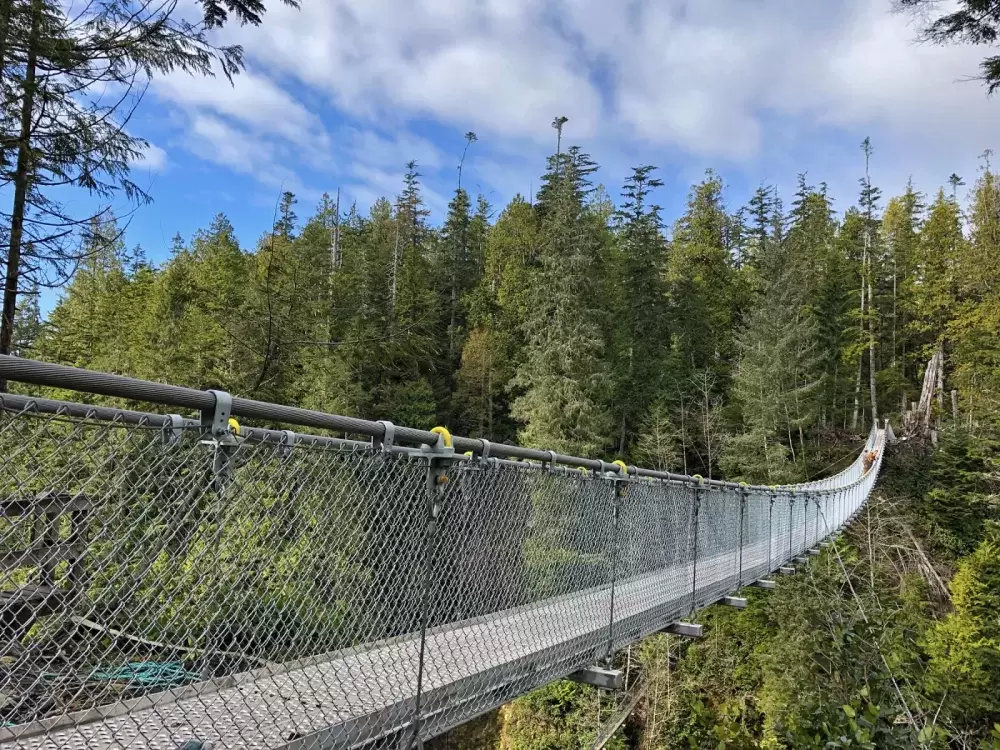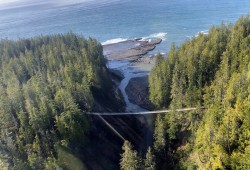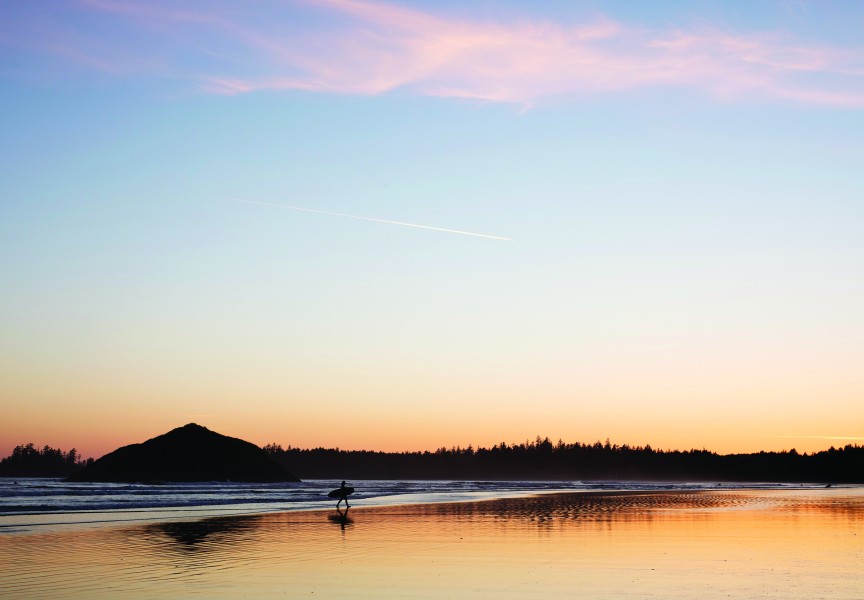Building a new bridge on the West Coast Trail was no walk in the park, Parks Canada says.
The popular coastal trek reopened June 4 after a year-long pandemic closure, enabling hikers to cross what Parks Canada describes as a feat of construction and engineering, a 113-metre suspension bridge hanging 120 metres above Logan Creek, referred to in Nuu-chah-nulth as wi?e:? (pronounced wi-eh).
“It was such an exciting project,” said Jackie Hicks, Parks Canada project manager, who was the first registered hiker to cross the new span. She last hiked the 75-km trail — which traverses Huu-ay-aht, Ditidaht and Pacheedaht territories between Pachena Bay and Gordon River — in 2002. This time, as a park employee, she had some final inspecting to do as the season got underway.
“It was an incredible experience,” Hicks said of her most recent trek. “I don’t think hikers now will realize, but we made it a little bit easier for them.”
Aside from its spectacular setting, West Coast Trail is known for exposure to the elements, and countless ups and downs, as it snakes between rugged coastline and dense rainforest. Built in 1907 as the Dominion Lifesaving Trail, the route was originally intended for rescuing shipwreck survivors in an era when there were many along what was known as the Graveyard of the Pacific.
Nowadays, about 6,000 hikers attempt the trail each season between May and September. Multiple improvements in recent years have made hiking the route safer and easier. Still, each year Parks Canada has to evacuate about 100 hikers from the trail due to illness or injury.
There are more than 100 ladder systems that must be scaled en route. Logan Creek was known to be especially taxing for backpackers carrying five to seven days of provisions.
To reach the old suspension bridge at kilometre 56, hikers scaled down a series of wooden ladders then climbed another series of ladders on the opposite side. The new bridge allows a safer and less physically demanding crossing than before, its lengthier span bridging the ravine at a higher elevation. Instead of a single plank too narrow to allow hikers to pass each other, there is the added reassurance of aluminum planking, beams and joists as well as steel support piers.
Completed in 2019, the new crossing is part of $7.9 million invested in the West Coast Trail, along with other upgrades including composting toilets.
But the bridge at wi?e:? wasn’t replaced to make hiking easier, Hicks noted. An assessment done as part of a Parks Canada bridge inspection program several years ago found the anchoring system holding all those ladders in place was deemed inadequate due to slope instability. The old ladder system was at issue, not the bridge. Wooden rungs, susceptible to wear and tear, had to be continually replaced.
A crew of about 10 workers camped along the creek during construction, equipped with nothing larger than a small excavator and a limited assortment of tools light enough to be flown in.
Pacheedaht First Nation monitors worked with Parks Canada staff on site to ensure contractors followed cultural and environmental standards. To minimize wildlife interactions, the contractor brought in a bear-safe storage container for all food and waste and a temporary electric fence was installed around the work site.
All bridge components had to be airlifted by helicopter. Old components had to be flown out for recycling. Each flight had to be strategically planned on account of the same natural forces that make the hike so arduous — heavy rain, fog banks and high winds.
During the intense wildfire season of 2019, there were no helicopters available, another hurdle for construction, though the bridge was completed that year.
According to Parks Canada, the new span ranks among the Top 10 in B.C. in its category of simple suspension bridges. There are about 50 listed in a provincial inventory.
“It is quite an improvement and, in effect, it’s also a beautiful, new piece of infrastructure,” Hicks said.
The Golden Skybridge, which opened in May between Revelstoke and Banff, includes two spans, one of which is 130 metres high, making it the highest in Canada. The other span at Golden is equal in length to Capilano Suspension Bridge, 140 metres.
The only drawback with Logan Creek Suspension Bridge, in relation to those high-profile tourist attractions, is getting there. Hikers alone can access the bridge and they have to register in advance to use the trail.
Parks Canada has produced a video about the construction of the bridge: https://www.youtube.com/watch?v=dF9I0P_ek6s&t=3s.








